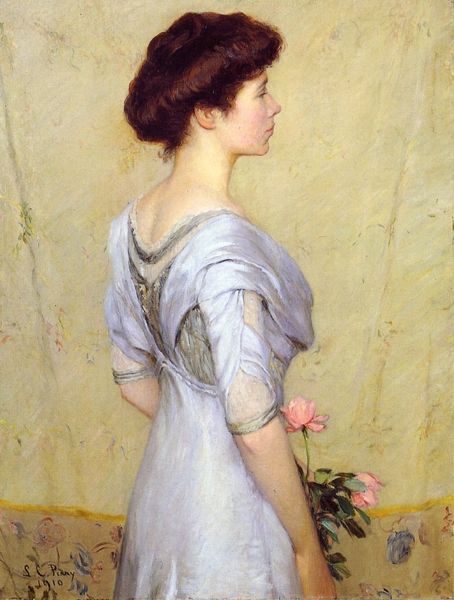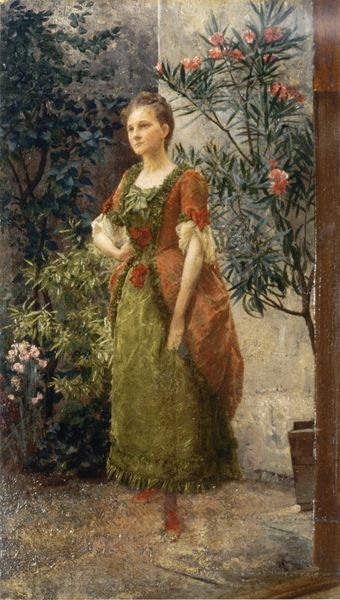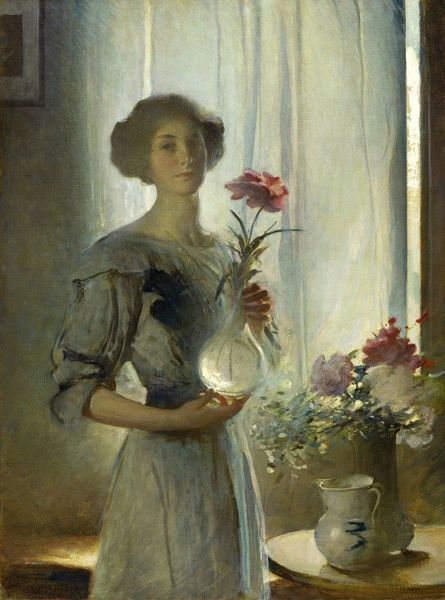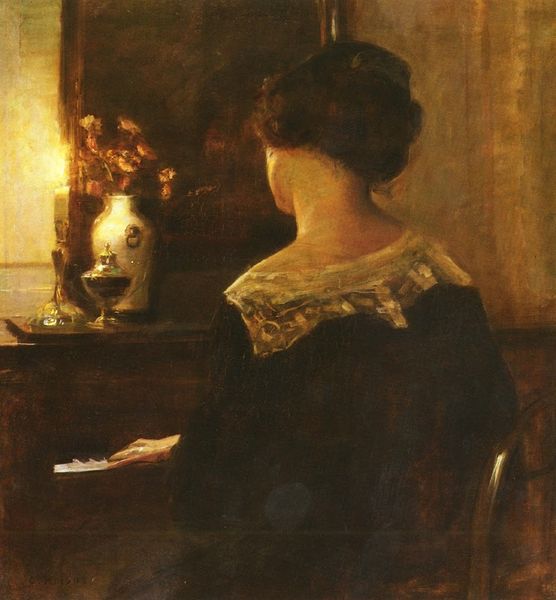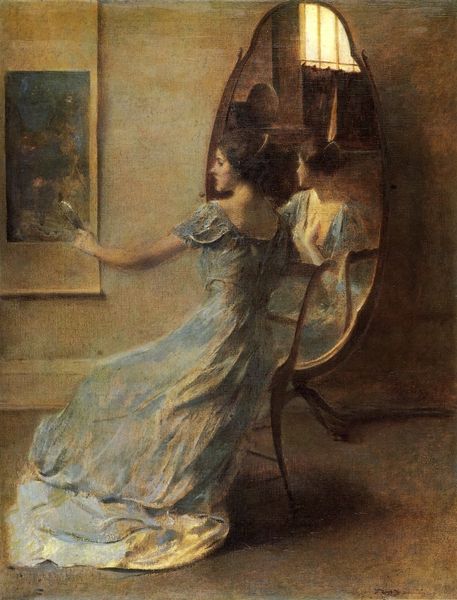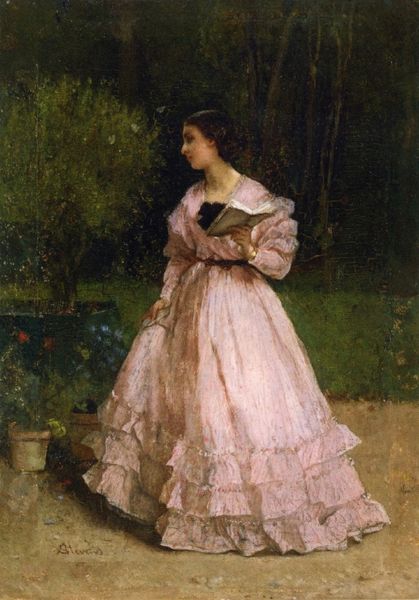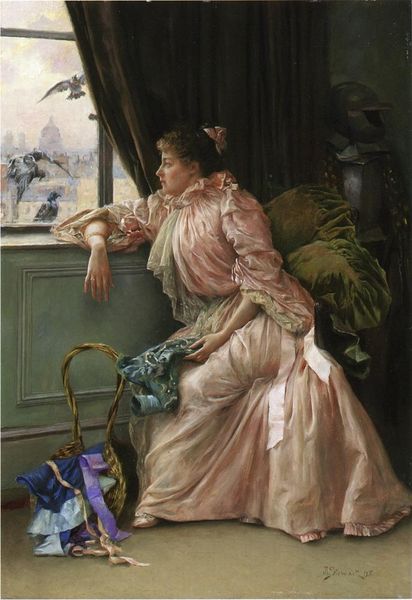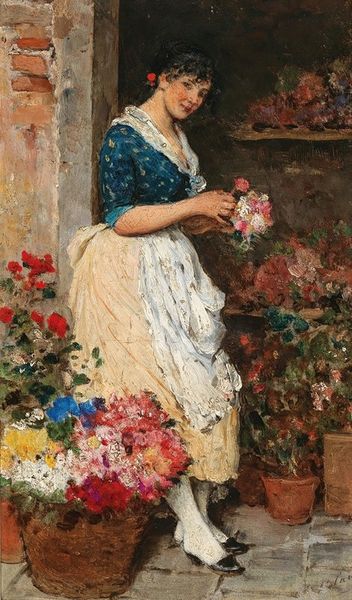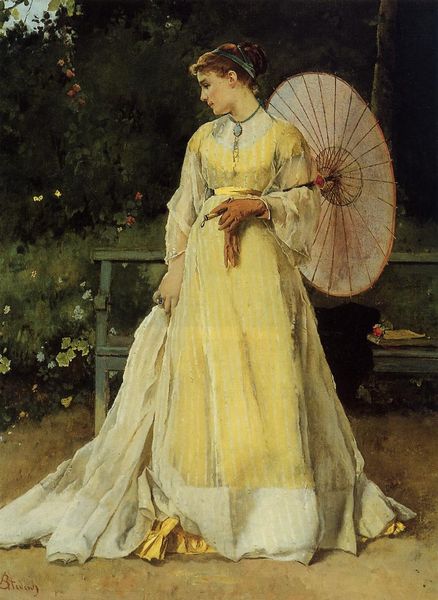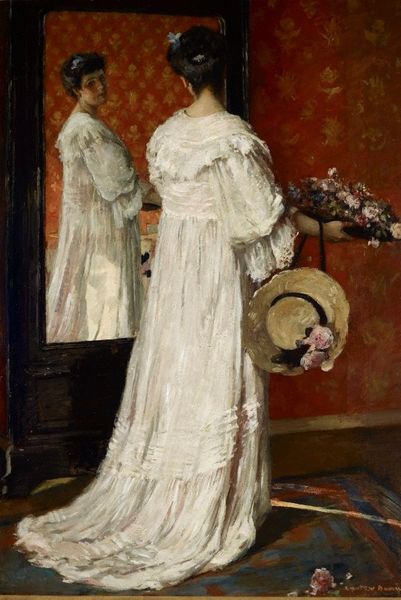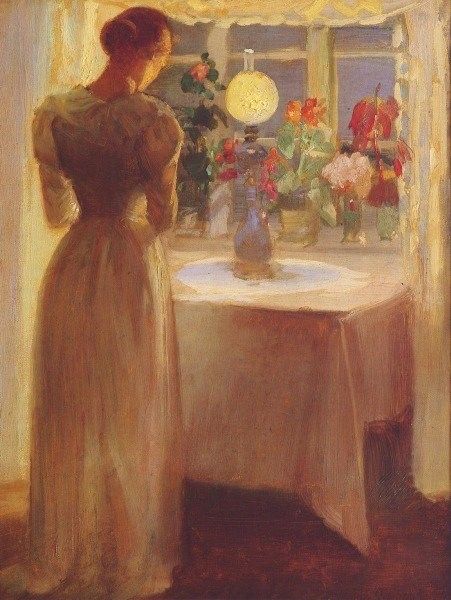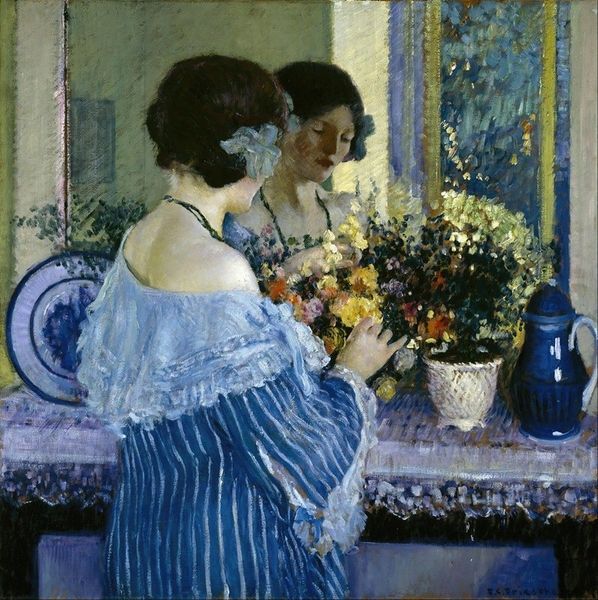
painting, plein-air, oil-paint
#
portrait
#
painting
#
impressionism
#
plein-air
#
oil-paint
#
landscape
#
flower
#
green
#
lady
Copyright: Public domain
Curator: Oh, I'm immediately struck by the interplay of light and shadow; it creates such an intimate, almost dreamlike atmosphere. Editor: Indeed. What we're looking at is a work by Lilla Cabot Perry, entitled "Roses," sometimes referred to as "The Scent of Roses." Perry, as we know, moved in Impressionist circles, particularly influenced by Monet, and it's important to recognize how her privileged background enabled her engagement with this movement. Curator: Absolutely. The texture is incredible! You can practically feel the brushstrokes on the canvas. I am wondering where the pigment was sourced for these creamy whites? And how might her process differ from that of her male contemporaries? Editor: Those are great points. Perry's Impressionistic style allowed her to capture the fleeting effects of light and color, very typical of the style's dedication to en plein air paintings. But what interests me here is the subtle presentation of women. Consider that this is at once intimate and somehow shielded: is the figure a romanticized version of idealized femininity or a representation of artistic independence in a male-dominated world? Curator: Hmm, it could be both, really. Looking closely, her gown is the picture of light and ephemeral fabric, likely machine-made; I think these observations reflect an industrializing world’s shifts. And do you notice how she wears the flowers on her head in almost celebration of Flora, the goddess of flowering plants? This tells us something about her approach to the conventions of portraiture. Editor: It's true that flowers carried heavy symbolic meanings during that era, particularly among women, right? I am now pondering about how class impacts who has the resources and time to make art such as this and also what happens to that art once it's produced, viewed, sold, owned, collected, archived, etc. I really wonder about the unseen labor involved in this, which, from a distance, just feels very romantic and beautiful. Curator: Well, there's much to unpack, but one cannot deny its enchanting allure, however complicit it may be! Editor: Right. On one hand, this work feels incredibly unique to the artist while at the same time it echoes the conventions of an era shaped by societal rules. Thank you for diving deep with me today.
Comments
No comments
Be the first to comment and join the conversation on the ultimate creative platform.
